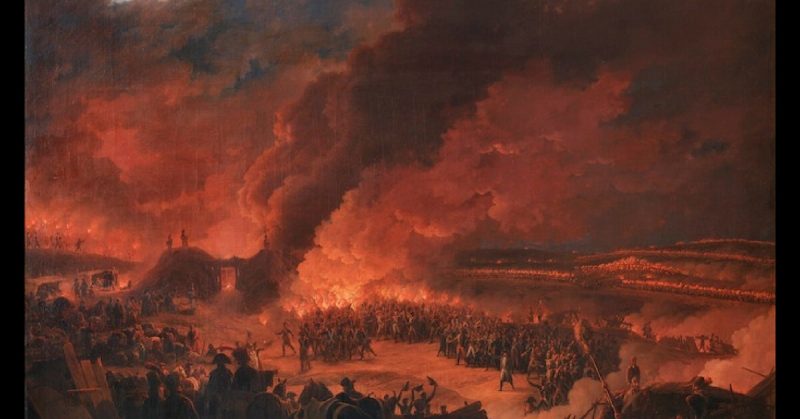On December 2, 1805, Napoleon achieved what many consider his greatest success. Outnumbered by the combined armies of the Russian Tsar Alexander I and the Austrian Holy Roman Emperor Francis II, he won a stunning victory at the Battle of Austerlitz.
Why was he so successful?
The Corps System
One of Napoleon’s greatest assets was the way in which he organized his army. It was divided into corps, each one capable of acting independently under its commander. These bodies of troops were large enough to be strategically significant but less cumbersome than an entire army. They could march separately through enemy terrain, progressing better than if they were in one group. Once united, they acted as a single army, with each corps providing a useful unit on the battlefield.
This system allowed Napoleon to carry out his tactics at Austerlitz.
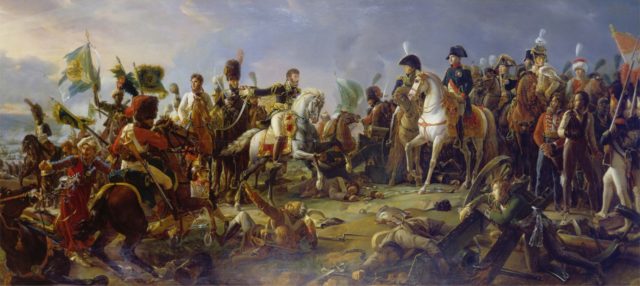
Corps Commanders
The men in charge of these corps were also important. Marshals of France such as Bernadotte, Davout, and Soult were skilled and courageous commanders who Napoleon could trust to carry out his orders. The post-revolutionary system of officer recruitment and advancement gave Napoleon a huge pool of talent. Experienced aristocratic officers worked alongside gifted men of humbler background.
A Strategic Bluff
In the days leading up to the battle, Napoleon took a huge risk to bluff his opponents. Withdrawing from the Pratzen Heights and Austerlitz itself, he gave up the best defensive ground available to him. Pulling his troops back in a disorderly fashion, he created the impression of an army in retreat. This was reinforced on November 29 when he pretended to be timid and uncertain when meeting with a Russian envoy.
Meanwhile, he was calling up his First Corps under Marshal Bernadotte and his Third Corps under Marshal Davout, both of which marched 60 miles from Vienna to join him.
Napoleon now had troops his opponents had not seen. They had been tricked into thinking Napoleon’s army could be beaten. It led to them advancing from the Pratzen Heights once the battle began, making themselves vulnerable.
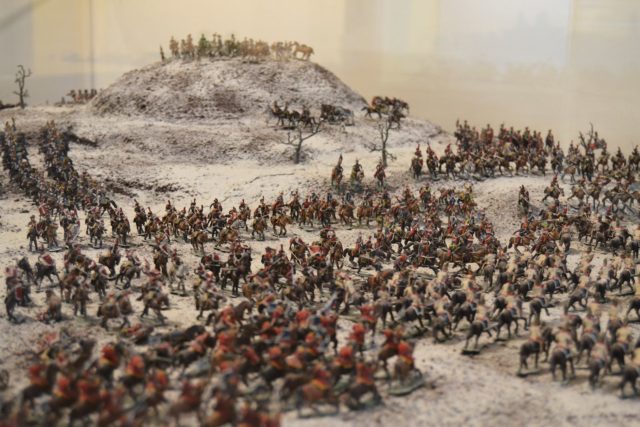
Deployment
Careful deployment created a trap for the Austrians and Russians. Marshal Soult’s Fourth Corps, strung out thinly to the south, created a vulnerable looking target. Meanwhile, Bernadotte and the First Corps lay concealed to the north, Davout and the Third Corps were also hidden.
Using the Terrain
Despite giving up the high ground before the start of the battle, Napoleon made excellent use of the terrain on which he fought. He hid the forces he was holding in reserve behind a hill to lure the enemy into his trap. Rough terrain was used to slow down his opponent’s advance. During the battle, he seized the heights and used this position to split the enemy in two, bringing victory for his army.
The Weather
Napoleon was helped by the weather. Thick early morning fog hid the arrival of Bernadotte and Davout’s corps. It also concealed the presence of Soult’s cavalry, held back behind the main lines.
French Morale
The French troops were in high spirits and devoted to their emperor. He had brought them pride, success, and prestige.
The night before the battle, he went around the camp in disguise to see how his men were doing. Almost immediately, he was recognized and greeted enthusiastically by his soldiers. Straw torches were raised on hundreds of poles as thousands of soldiers cheered their praise for him.
These passionate, energized, dedicated troops were one of the French army’s greatest strengths.
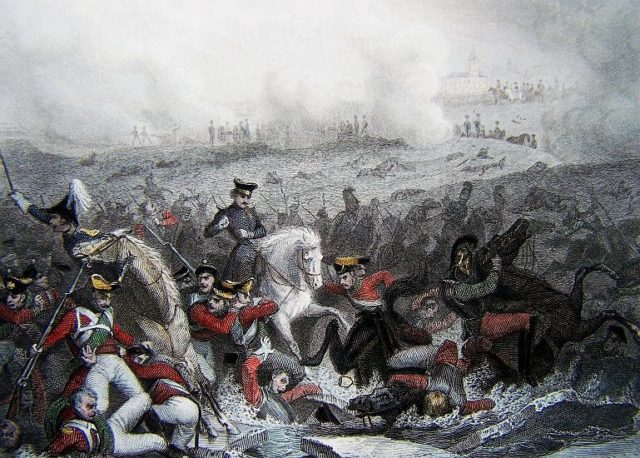
Success at Telnitz and Sokolnitz
The fighting near the villages of Telnitz and Sokolnitz was crucial to Napoleon’s success. 6,600 French soldiers held up nearly 40,000 Austrians, buying the rest of the army time.
Speed of Manoeuvre
The mobility of the French army far outmatched that of the lumbering Austrian and Russian lines. It resulted from a combination of factors, including Napoleon’s decisive orders, the formations of his army, and the experience and confidence of his troops. It allowed the French to dominate the field.
The Russian Army
The Russians forces did have strengths, including good morale and an incredibly powerful cavalry. They also had serious weaknesses. Many of the officers were ineffective. The artillery, although numerous, lacked the range of the French guns. The men were exhausted from three months of marching and lacked some of their battlefield supplies as these had not yet reached Austerlitz.
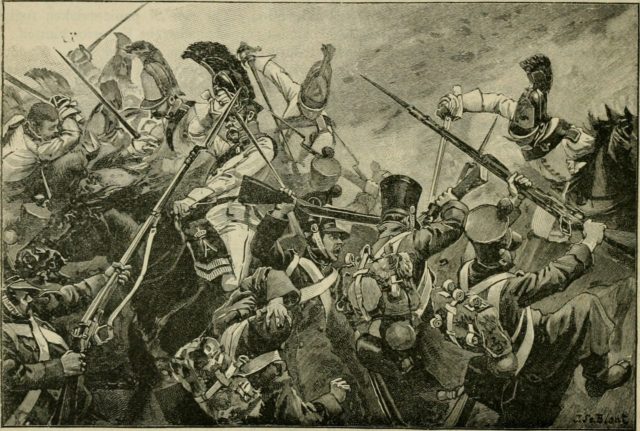
Lack of Coordination in his Enemies
The Austrians and Russians, each with their separate commanders, did not always coordinate their efforts well. Around midday, the Russian Imperial Guard under Grand Duke Constantine rushed to counter French advances in the weakened center of the allied lines. They ran into withdrawing Austrian troops and the confusion of the two armies disrupted the Russian counter-attack.
This lack of coordination went deeper than simple errors on the day. The command staff of both armies was divided between hawkish commanders who wanted to attack Napoleon and more cautious men. They had squabbled over ten different plans unable to agree on the best approach. Long into the night before the battle, they were still discussing strategy. By then, many were half-asleep, and one key commander was drunk.
There was little hope of any coordination to carry out their plans.
Lost in Translation
Their communication was impeded by the need to translate complex written orders into Russian before they were passed to the Tsar’s officers. Work on this did not start until 3 am on the night before the battle, meaning some commanders had not received their orders when the fighting began.
Sources:
Geoffrey Ellis (1991), The Napoleonic Empire.
Alan Forrest (2011), Napoleon.
Robert Harvey (2006), The War of Wars: The Epic Struggle Between Britain and France: 1789-1815.
Alistair Horne (1996), How Far From Austerlitz? Napoleon 1805-1815.
